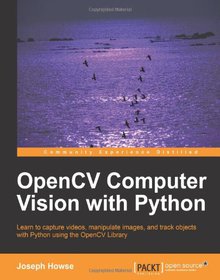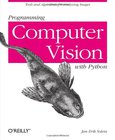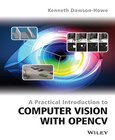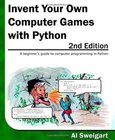OpenCV Computer Vision with Python

Book Details:
| Publisher: | Packt Publishing |
| Series: | Packt |
| Author: | Joseph Howse |
| Edition: | 1 |
| ISBN-10: | 1782163921 |
| ISBN-13: | 9781782163923 |
| Pages: | 122 |
| Published: | Apr 23 2013 |
| Posted: | Nov 19 2014 |
| Language: | English |
| Book format: | |
| Book size: | 3.63 MB |
Book Description:
Learn to capture videos, manipulate images, and track objects with Python using the OpenCV Library Overview Set up OpenCV, its Python bindings, and optional Kinect drivers on Windows, Mac or Ubuntu Create an application that tracks and manipulates faces Identify face regions using normal color images and depth images In Detail Computer Vision can reach consumers in various contexts via webcams, camera phones and gaming sensors like Kinect. OpenCV's Python bindings can help developers meet these consumer demands for applications that capture images, change their appearance and extract information from them, in a high-level language and in a standardized data format that is interoperable with scientific libraries such as NumPy and SciPy. "OpenCV Computer Vision with Python" is a practical, hands-on guide that covers the fundamental tasks of computer visioncapturing, filtering and analyzing imageswith step-by-step instructions for writing both an application and reusable library classes. "OpenCV Computer Vision with Python" shows you how to use the Python bindings for OpenCV. By following clear and concise examples you will develop a computer vision application that tracks faces in live video and applies special effects to them. If you have always wanted to learn which version of these bindings to use, how to integrate with cross-platform Kinect drivers and and how to efficiently process image data with NumPy and SciPy then this book is for you. What you will learn from this book Install OpenCV and related software such as Python, NumPy, SciPy, OpenNI, and SensorKinectall on Windows, Mac or Ubuntu Capture, display, and save photos and real-time videos Handle window events and input events using OpenCV's HighGui module or Pygame Understand OpenCV's image format and how to perform efficient operations on OpenCV images with NumPy and SciPy Apply "curves" and other color transformations to simulate the look of old photos, movies or video games Apply an effect only to edges in an image Copy and resize segments of an image Apply an effect only to certain depths in an image by using data from a depth sensor such as Kinect Track faces, eyes, noses and mouths by using prebuilt datasets Track arbitrary objects by creating original datasets Approach A practical, project-based tutorial for Python developers and hobbyists who want to get started with computer vision with OpenCV and Python. Who this book is written for OpenCV Computer Vision with Python is written for Python developers who are new to computer vision and want a practical guide to teach them the essentials. Some understanding of image data (for example, pixels and color channels) would be beneficial. At a minimum you will need access to at least one webcam. Certain exercises require additional hardware like a second webcam, a Microsoft Kinect or an OpenNI-compliant depth sensor such as the Asus Xtion PRO.
Download Link:
Related Books:
Programming Computer Vision with Python
Tools and algorithms for analyzing images
If you want a basic understanding of computer visionamp;#8217;s underlying theory and algorithms, this hands-on introduction is the ideal place to start. Youamp;#8217;ll learn techniques for object recognition, 3D reconstruction, stereo imaging, augmented reality, and other computer vision applications as you follow clear examples written in Python. Programming Computer Vision with Python explains computer vision in broad terms that wonamp;#8217;t bog you down in theory. You get complete code samples with explanations on how to reproduce and build upon each example, along with exercises to help you apply what youamp;#8217;ve learned. This book is ideal for students, researchers, and enthusiasts with basic programming and standard mathematical skills....
A Practical Introduction to Computer Vision with OpenCV
Explains the theory behind basic computer vision and provides a bridge from the theory to practical implementation using the industry standard OpenCV librariesComputer Vision is a rapidly expanding area and it is becoming progressively easier for developers to make use of this field due to the ready availability of high quality libraries (such as OpenCV 2). This text is intended to facilitate the practical use of computer vision with the goal being to bridge the gap between the theory and the practical implementation of computer vision. The book will explain how to use the relevant OpenCV library routines and will be accompanied by a full working program including the code snippets from the text. This textbook is a heavily illustrated, practical intr...
Invent Your Own Computer Games with Python
2nd Edition
"Invent Your Own Computer Games with Python" teaches you computer programming in the Python programming language. Each chapter gives you the complete source code for a new game and teaches the programming concepts from these examples. The book is available under a Creative Commons license and can be downloaded in full for free from http://inventwithpython.com "Invent with Python" was written to be understandable by kids as young as 10 to 12 years old, although it is great for anyone of any age who has never programmed before. This second edition has revised and expanded content, including using the Pygame library to make games with ...
2007 - 2021 © eBooks-IT.org



